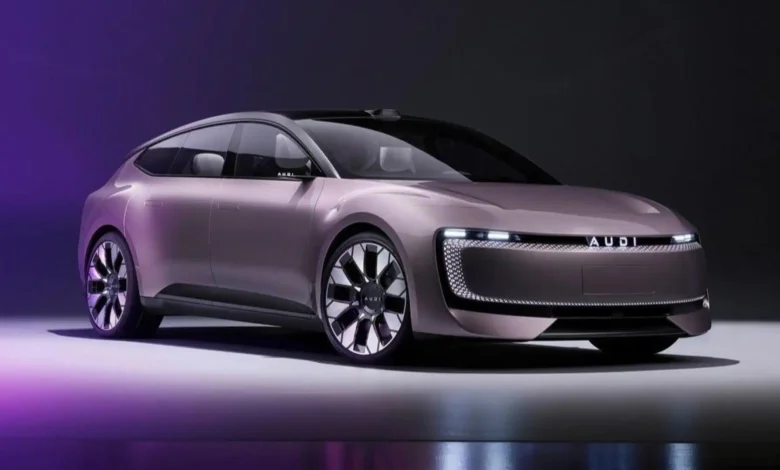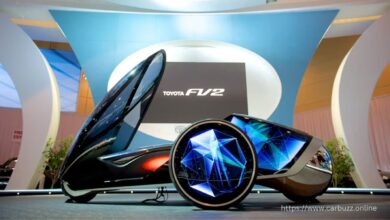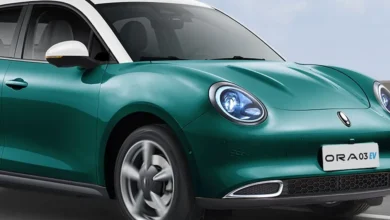Audi Quantum: The World’s First Gravity-Powered Kinetic EV

Audi is revolutionizing electric mobility with the Quantum—the first production car with a gravity-powered kinetic energy recovery system (KERS) that harvests energy from bumps, potholes, and rough terrain.
-
10% range boost on bad roads (perfect for cities like Karachi, Lahore, or Mumbai)
-
Self-leveling suspension that smooths out even the worst streets
-
No extra charging – the worse the road, the more energy you recover
Coming in 2028, this is the ultimate urban EV for developing markets.
🔋 Technical Specifications: How Gravity Power Works
Kinetic Energy Recovery System (KERS)
-
Electromagnetic dampers convert suspension movement into electricity
-
Energy yield:
-
Smooth roads: Minimal recovery
-
Moderate bumps: +3-5% range
-
Severe potholes: Up to 10% extra range
-
-
Max power output: 2 kW continuous (5 kW peak)
Battery & Powertrain
-
120 kWh solid-state battery (800V architecture)
-
Dual-motor Quattro AWD (650 HP / 750 lb-ft torque)
-
Range (normal): 700 km (435 miles)
-
Range (with KERS): Up to 770 km (478 miles)
-
0-100 km/h (0-62 mph): 3.4 seconds
Self-Leveling Suspension
-
Hydraulic active dampers (adjusts stiffness in milliseconds)
-
Pothole detection AI (softens suspension before impact)
💰 Pricing & Market Focus
| Model | Price (USD) | Target Markets |
|---|---|---|
| Quantum Base | $110,000 | Global |
| Quantum Rugged | $130,000 | India, Pakistan, SE Asia |
| Fleet Edition | $95,000 | Taxi/ride-hail companies |
Why It’s Perfect for Rough Roads
✔ Reinforced underbody armor (protects battery from debris)
✔ High-ground-clearance mode (+3 cm lift at low speeds)
✔ Dust-proof cooling system (for unpaved roads)
🚙 Exterior Design: Rugged Yet Aerodynamic
Dimensions
| Measurement | Value | |
|---|---|---|
| Length | 4.9 m (16 ft) | |
| Width | 2.1 m (6.9 ft) | |
| Height | 1.6 m (5.2 ft) | |
| Weight | 2,300 kg (5,070 lbs) | (Heavy due to KERS system) |
Key Features
✔ Reinforced 22″ alloy wheels (run-flat tires standard)
✔ Active aero shutters (close on rough roads to protect components)
✔ Self-healing paint (resists scratches from debris)
🛋️ Interior: Luxury Meets Durability
Seating & Comfort
-
4 “zero-fatigue” seats (dampen road vibrations)
-
Noise-canceling cabin (<40 dB even on broken roads)
-
HUD with road-roughness display (shows energy recovery in real-time)
Tech & Connectivity
-
Off-road navigation (marks pothole-heavy routes for max regeneration)
-
“Bumpy Road Mode” (prioritizes energy recovery over comfort)
-
Vehicle-to-load (V2L) ports (power appliances during outages)
⚡ Charging & Energy Use
KERS Energy Recovery
| Road Condition | Range Boost |
|---|---|
| Highway (smooth) | 0-2% |
| City (moderate bumps) | 3-5% |
| Severe potholes | Up to 10% |
Plug Charging
| Method | 10-80% Time |
|---|---|
| 350kW DC Fast | 15 mins |
| 11kW Home | 8 hrs |
🌍 Market Impact: Built for Developing Nations
Ideal For:
-
Pakistani roads (Karachi’s potholes become power plants)
-
Indian highways (energy recovery on chaotic streets)
-
African bush roads (durable enough for off-grid use)
Competitive Edge Over Luxury SUVs
| Feature | Audi Quantum | Range Rover EV |
|---|---|---|
| Pothole Energy Recovery | ✅ Yes | ❌ No |
| Suspension Durability | 500K km rating | 300K km |
| Rough-Road Range | +10% | 0% |
⚠️ Challenges
-
Weight penalty (KERS adds 150 kg)
-
Limited benefit in rich countries (where roads are smooth)
-
Higher maintenance cost (specialized dampers)
🔮 Future Models
-
2030 Pickup Version (For construction sites)
-
Bus/Truck KERS systems (Scaling to public transport)





